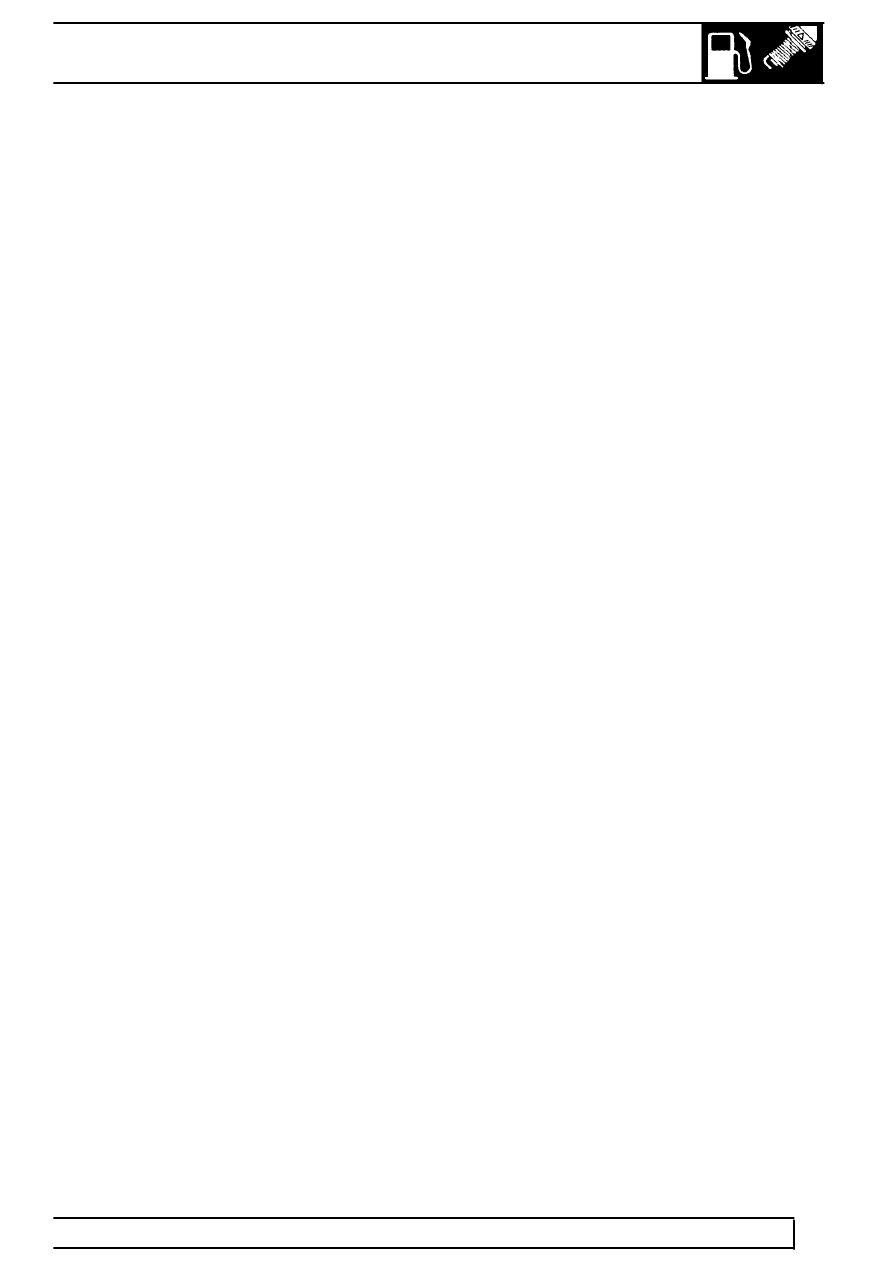Range Rover P38

LAND ROVER V8
57
DESCRIPTION AND OPERATION
Advanced Evaporative Emissions System - from
99MY (NAS only)
The Bosch Motronic 5.2.1 ECM includes control for
the evaporative emissions system components, its
purpose is to minimise the evaporative loss of fuel
vapour from the fuel system to the atmosphere. This
is achieved by venting the system through an EVAP
canister filled with vapour absorbing charcoal. The
charcoal acts like a sponge and stores the vapour
until the canister is purged under the control of the
ECM.
Fuel vapour is stored in the activated charcoal
canister for retention when the vehicle is not
operating. When the vehicle is operating, fuel vapour
is drawn from the canister into the engine via a purge
control valve. The vapour is then delivered to the
intake plenum chamber to be supplied to the engine
cylinders where it is burned in the combustion
process.
See EMISSION CONTROL, Description and
operation.
Fuel Filling
During fuel filling, the fuel vapour displaced from the
fuel tank is allowed to escape to atmosphere; valves
within the fuel filler prevent any vapour escaping
through the EVAP canister as this can adversely
effect the fuel cut-off height. Only fuel vapour
generated whilst driving is prevented from escaping to
atmosphere by absorption into the EVAP canister.
The fuel filler shuts off to leave the tank approximately
10% empty to ensure the roll over valves (ROVs) are
always above the fuel level and so vapour can escape
to the EVAP canister and the tank can breathe. The
back pressures normally generated during fuel filling
are too low to open the pressure relief valve, but
vapour pressures accumulated during driving are
higher and can open the pressure relief valve. Should
the vehicle be overturned, the ROVs shut off to
prevent any fuel spillage.
Fuel Tank Venting
Fuel vapour generated from within the fuel tank as the
fuel heats up is stored in the tank until the pressure
exceeds the operating pressure of the two-way valve.
When the two-way valve opens, the fuel vapour
passes along the vent line from the fuel tank via the
fuel tank vapour separator to the evaporation inlet port
of the EVAP canister.
Liquid fuel must not be allowed to contaminate the
charcoal in the EVAP canister. To prevent this, the
fuel vapour separator fitted to the fuel filler neck
allows fuel to drain back into the tank. As the fuel
vapour cools, it condenses and is allowed to flow back
into the fuel tank from the vent line by way of the
two-way valve.
The EVAP canister contains charcoal pellets which
absorbs and stores the fuel vapour from the fuel tank
while the engine is not running. When the canister is
not being purged, the fuel vapour remains in the
canister and clean air exits the canister via the air inlet
port.
ECM Purge Control
The engine management ECM controls the output
signals to the purge valve and the canister vent
solenoid (CVS) valve, and receives an input from the
fuel tank pressure sensor. The system will not work
properly if there is a leakage or clogging within the
system, or if the purge valve cannot be controlled.
When the engine is running, the ECM decides when
conditions are correct for the vapour to be purged
from the canister and opens the canister purge valve.
This connects a manifold vacuum line to the canister
and fuel vapour containing the hydrocarbons is drawn
from the canister’s charcoal element to be burned in
the engine. Clean air is drawn into the canister
through the air inlet port to fill the displaced volume of
vapour.
The purge valve remains closed below preset coolant
and engine speed values to protect the engine tune
and catalytic converter performance. If the EVAP
canister was purged during cold running or at idling
speed the additional enrichment in the fuel mixture
would delay the catalytic converter light off time and
cause erratic idle. When the purge valve is opened,
fuel vapour from the EVAP canister is drawn into the
plenum chamber downside of the throttle housing, to
be delivered to the combustion chambers for burning.
